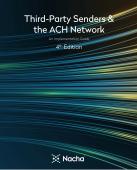RMAG’s Ideas for Ways ODFIs Can Manage Exposure Risk in an Economic Downturn
Author
With the economic slowdown that resulted from the pandemic, the Nacha Risk Management Advisory Group (RMAG) updated its recommendations for ODFIs on sound business practice on exposure risk management.
RMAG has a long history of providing sound business practices on the topic of exposure limits and exposure limit monitoring. Members talked about the potential for increased levels of risk as client businesses experience rapid drops in revenues due to decreased business. The impact on client cashflows and their ability to fund their current levels of expense, particularly for payroll and vendor payments, is something that financial institutions have to take into account.
Most of the suggestions in the four RMAG articles that are linked below still apply in both normal economic times and during an economic downturn. However, depending on the credit risk policy at your financial institution RMAG members suggested that ODFIs:
• Review their client’s financial position more frequently to reconfirm the client’s risk rating.
• Review and potentially adjust client’s exposure limits. This could be at the client level or at the industry level depending on the credit risk policy of that FI.
• Review the daylight overdraft approval and overdraft approval policies and procedures with those associates charged with the monitoring to ensure compliance.
While these are suggestions for what to do during an economic downturn, ODFIs should remain equally diligent once the economic downturn is over, since individual clients or client industries may recover at different rates.
During the spring of 2020 RMAG posted a series of four articles to Nacha.org on different aspects of the topic of Sound Business Practices for Risk & Exposure Management. The links to the articles are provided here as a refresher:
Part 1: Credit Risk Management & Policy
Part 2: Limits and Controls
Part 3: Underwriting Credit Origination
Part 4: Underwriting Debit Origination








